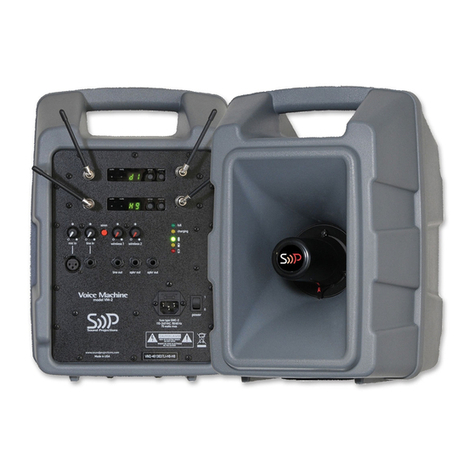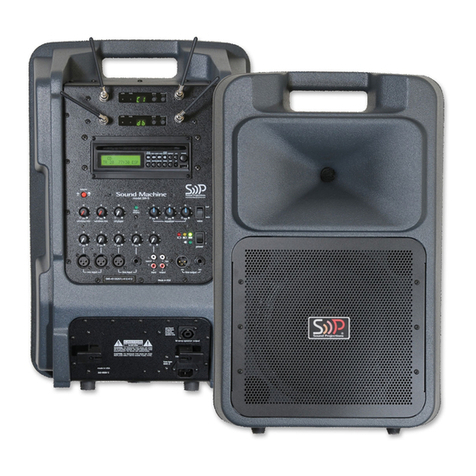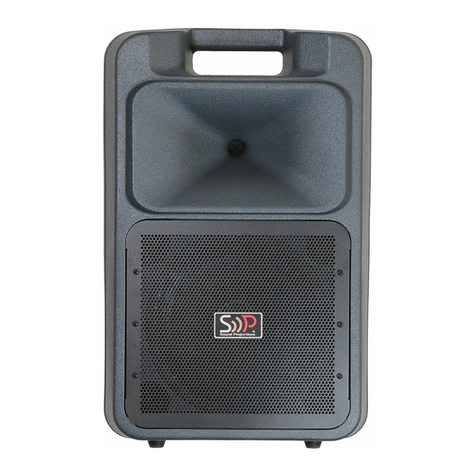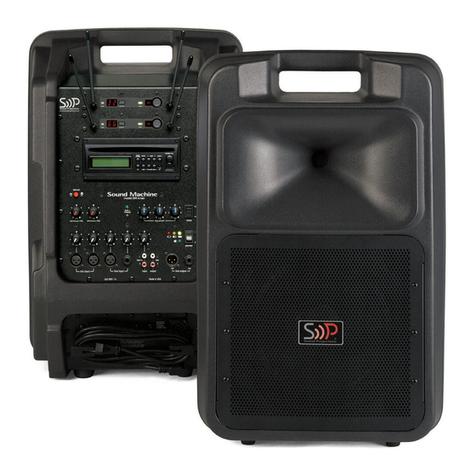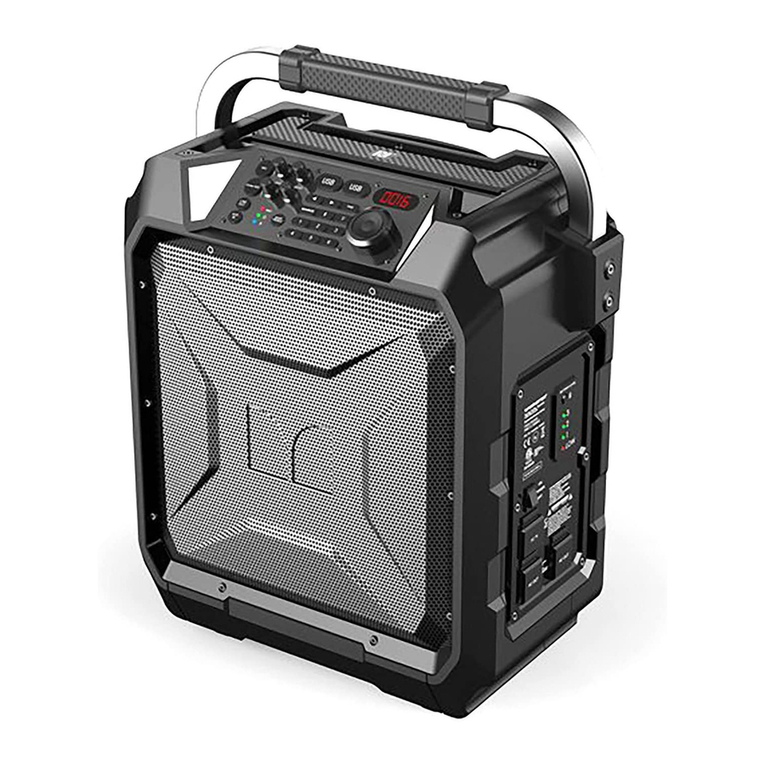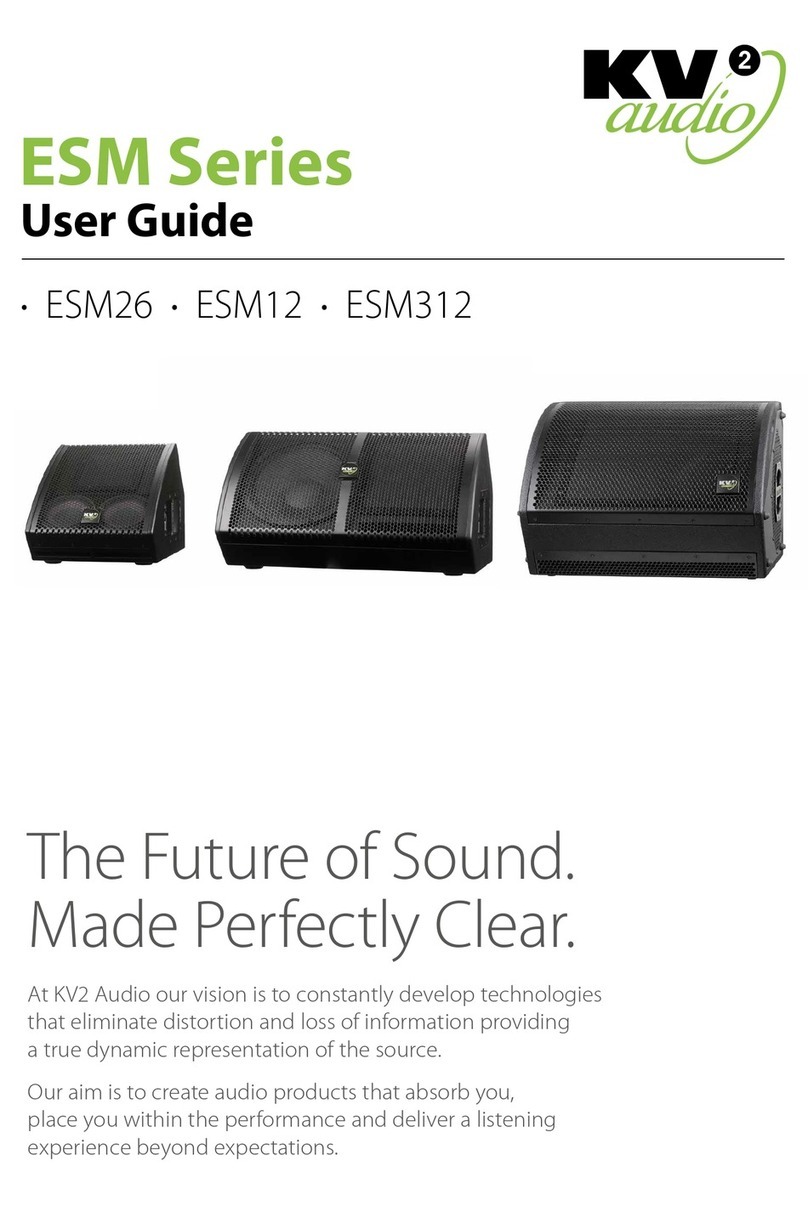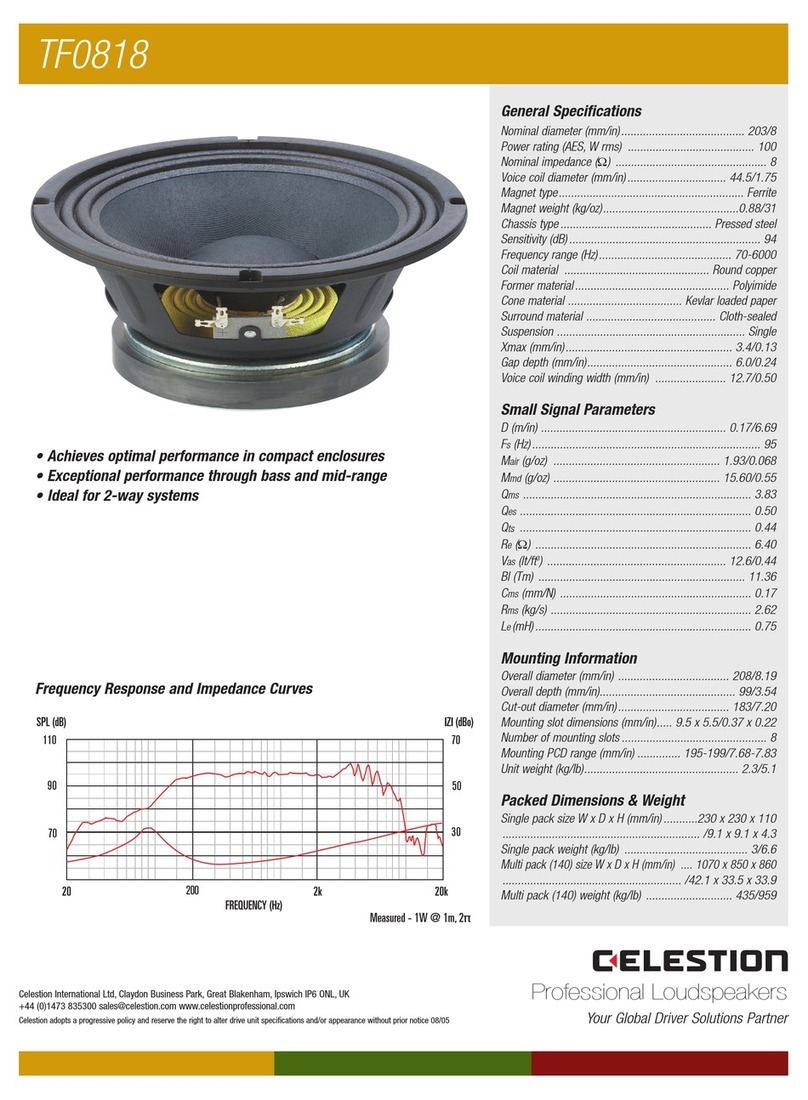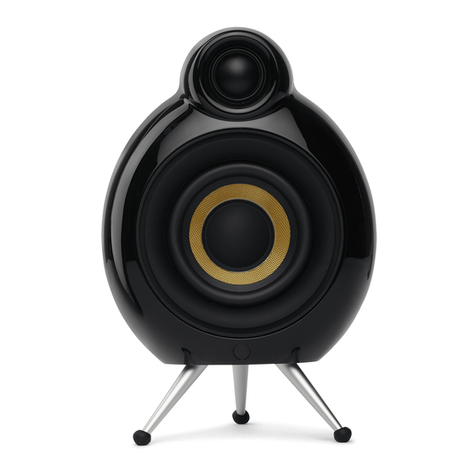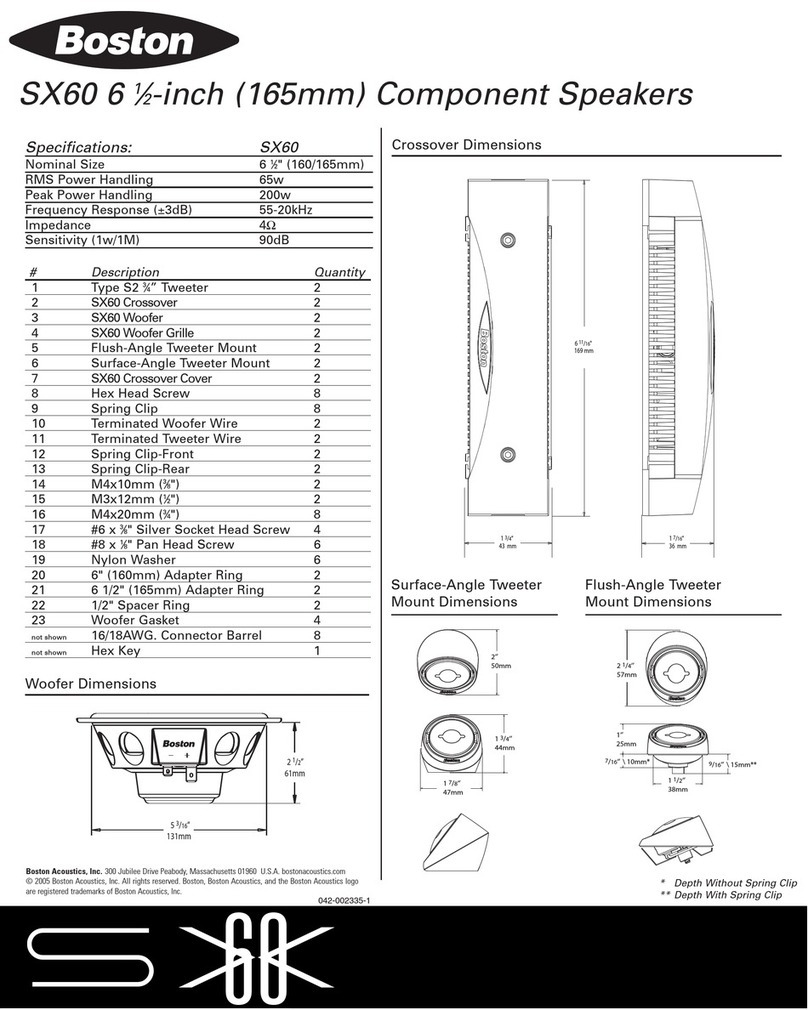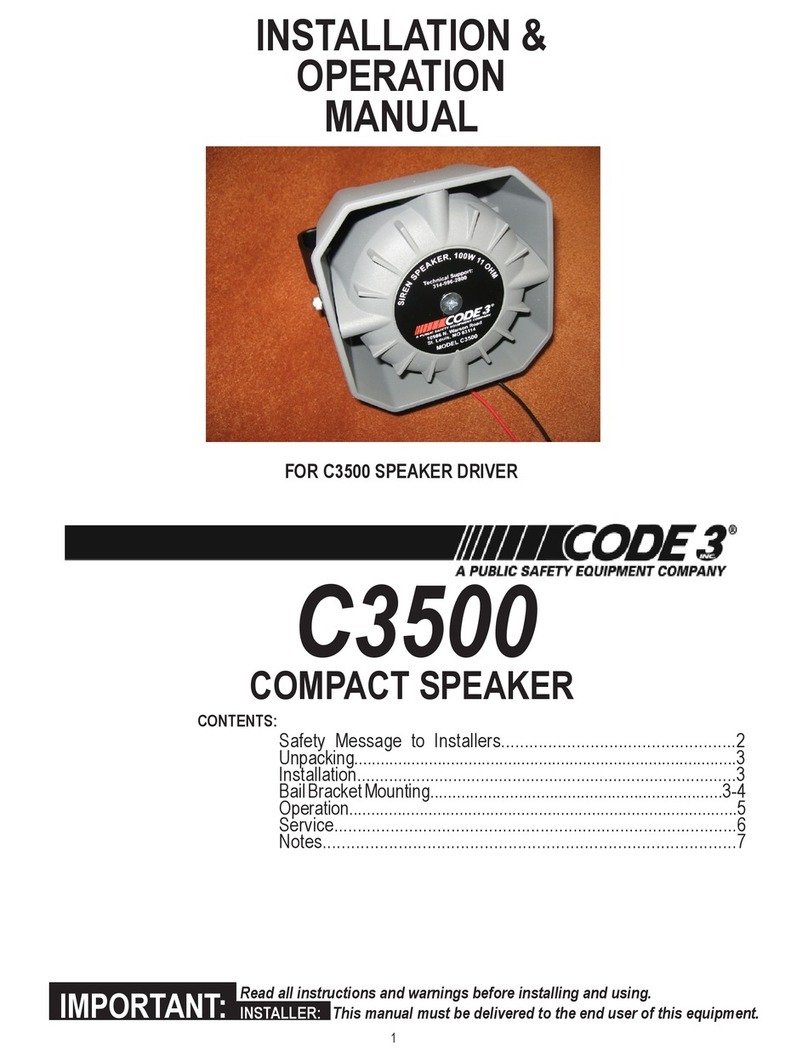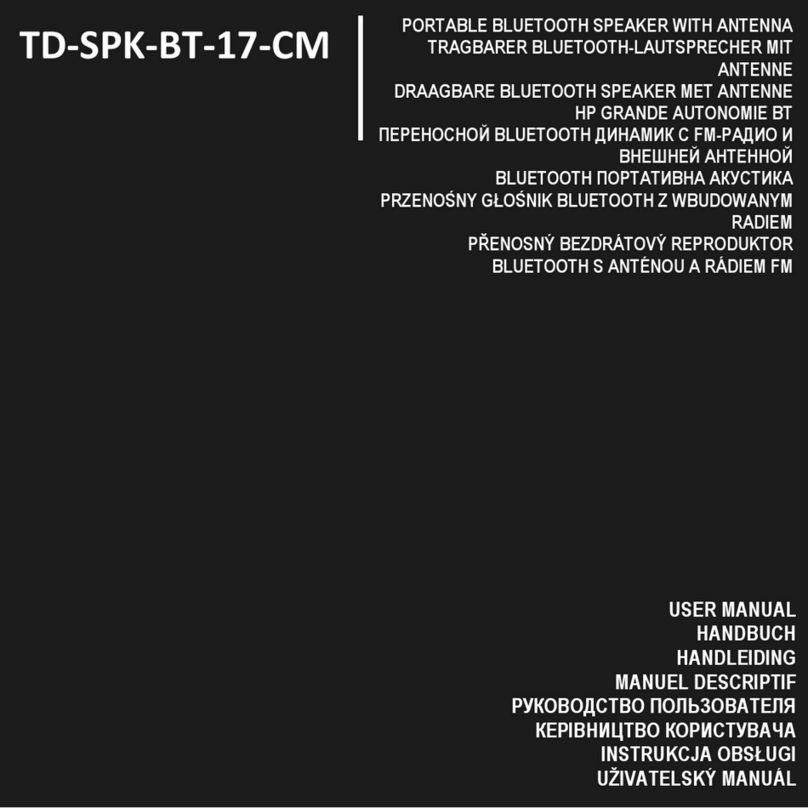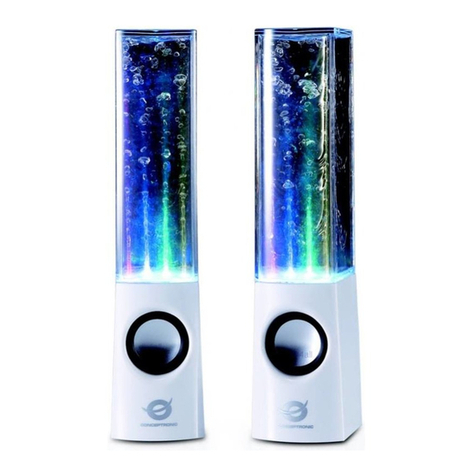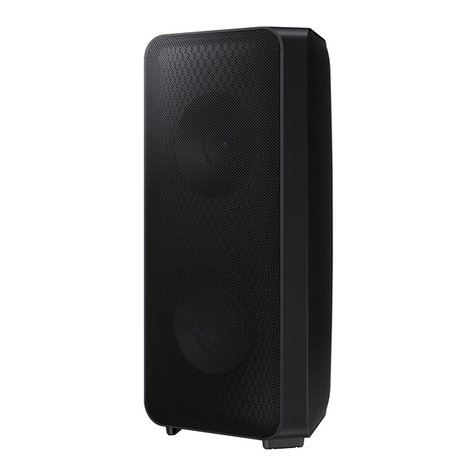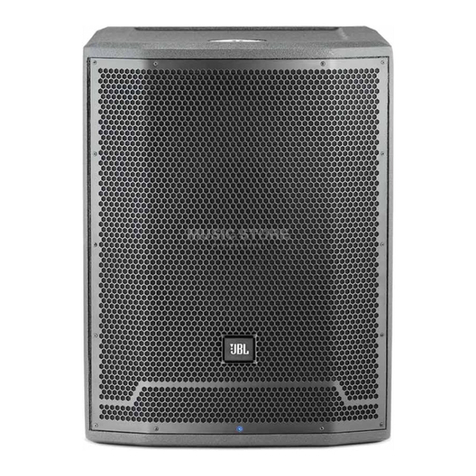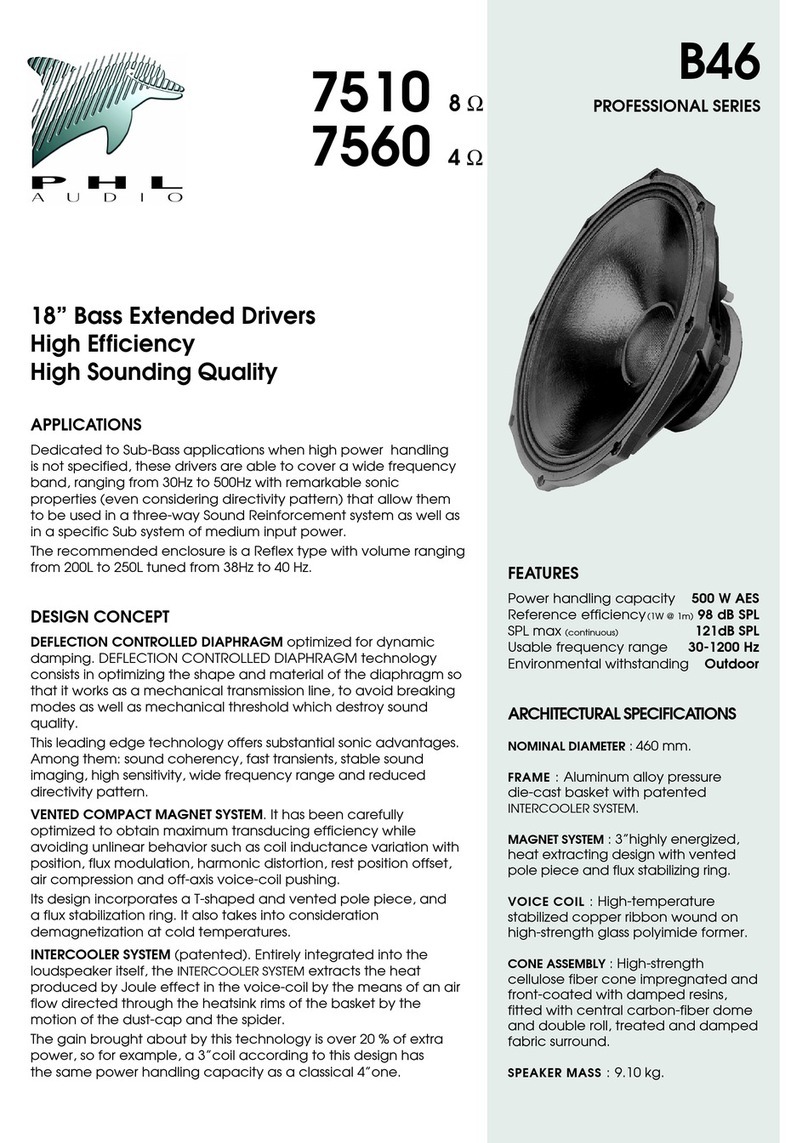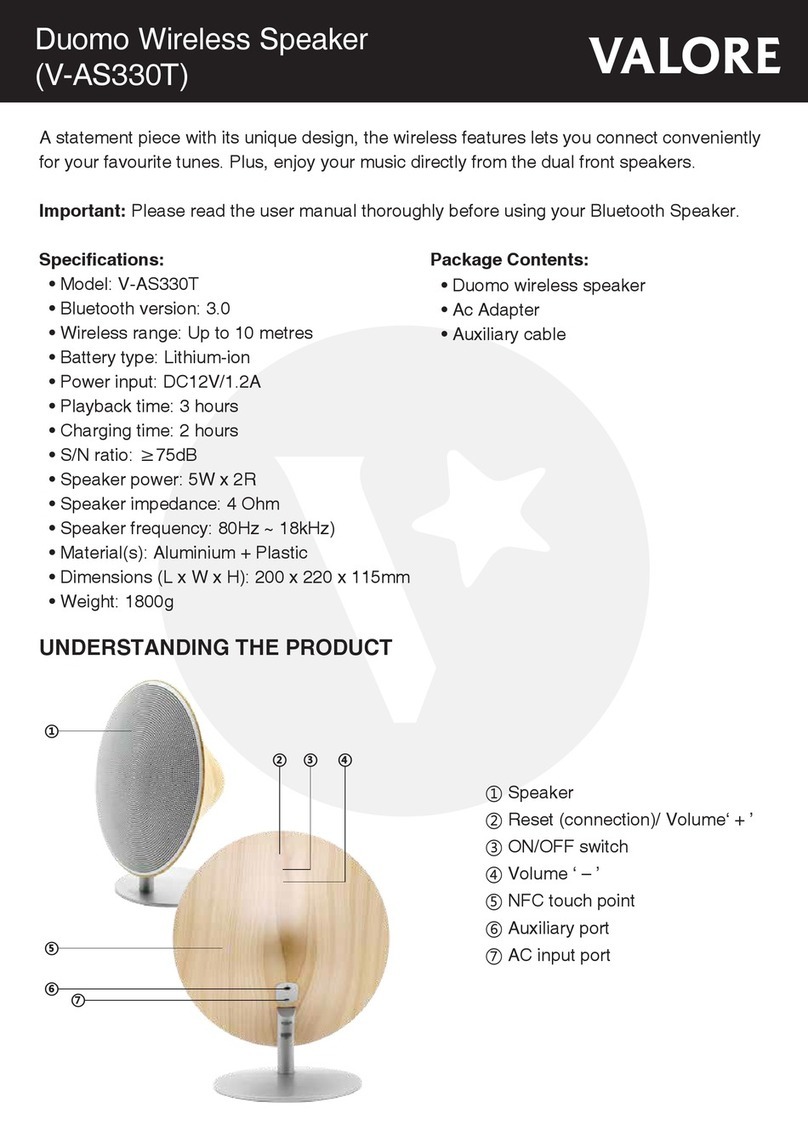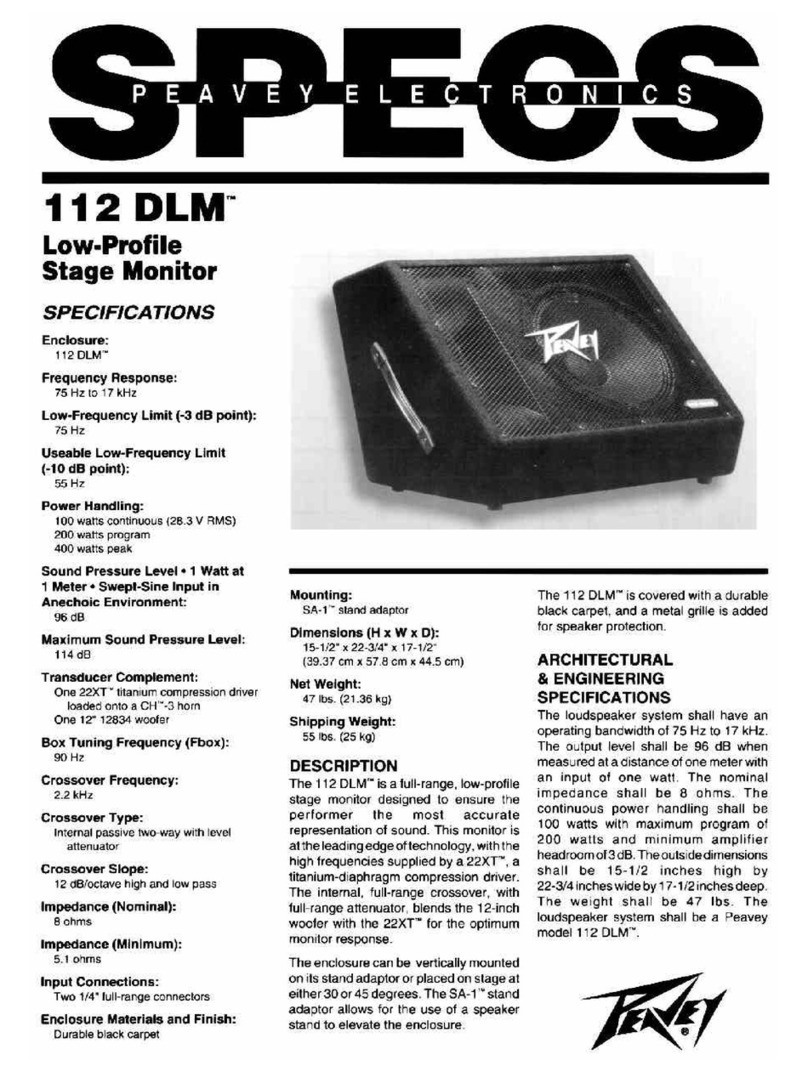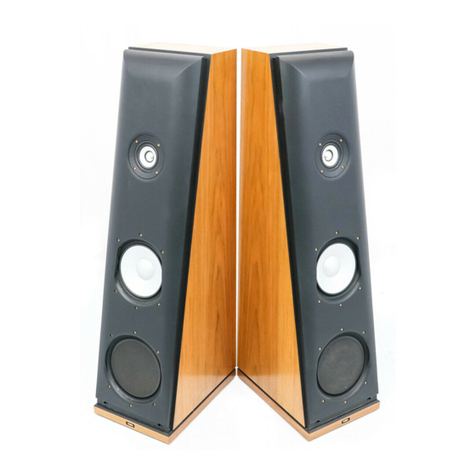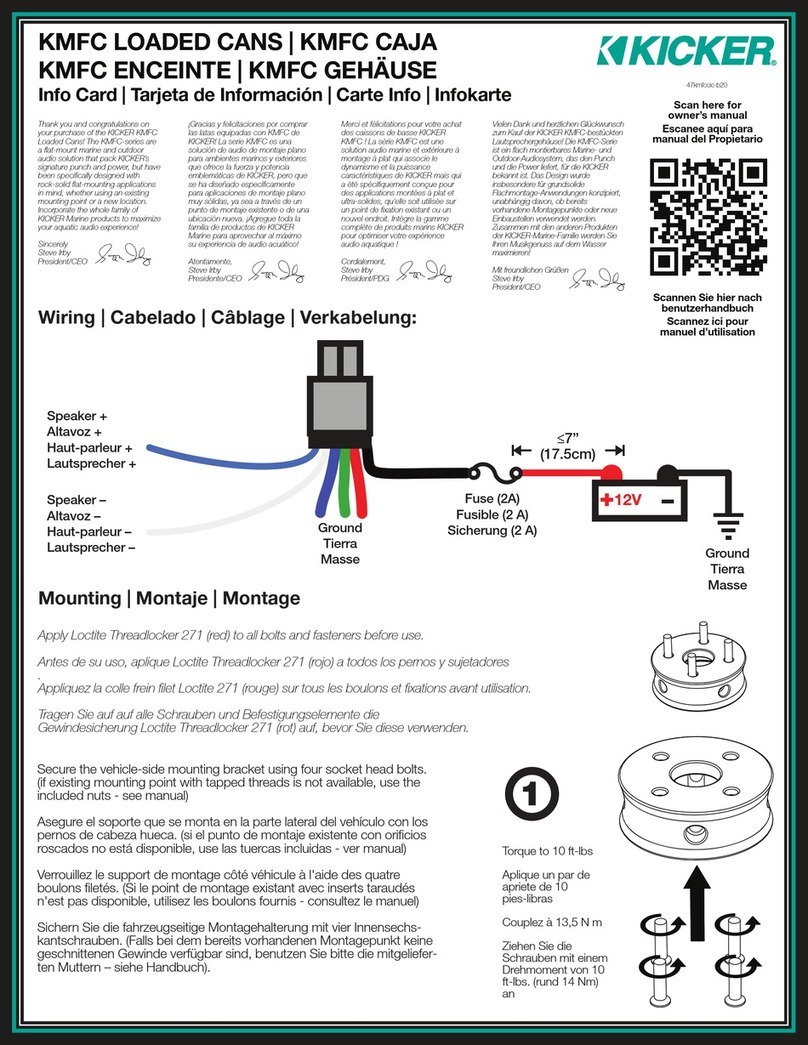Sound Projections Sound Machine SM-3neo User manual

User Guide
Sound Machine SM-3neo
Warranty statement.
Sound Projections Six Year Limited Warranty.
Your Sound Projections SM-3neo is warranted to be free of defects in materials and
workmanship for a period of 6 years from the date of original purchase, subject to
the following conditions:
• This warranty excludes defects caused by normal wear, abuse, shipping
damage, or failure to use product in accordance with instructions. All war-
ranty service must be performed or authorized by Sound Projections. Any
service or modifications performed without authorization from Sound
Projections may void this warranty.
• The Ni-MH rechargeable battery in SM-3neo models is warranted for a
period of 3 years.
• Wireless microphone and CD/MP3 player options are warranted for a
period of two years.
• Prior to returning your system for repair and/or warranty service, please
contact our customer service department at the address below for a
Return Authorization (RA) number.
Sound Projections
22130 South Vermont Avenue, unit E
Torrance, California 90502
(310) 618-9619
Fax (310) 618-9620
www.soundprojections.com

11
Replacing the fuse.
Warning! Replace fuse with same type and
rating as indicated on panel.
1. Remove power cord plug from panel
mounted AC receptacle
2. Pry fuse carrier away from receptacle
with small screwdriver
3. Remove fuse to be replaced.
4. Install new fuse
5. Insert fuse carrier with new fuse back into receptacle
6. Plug power cord back into AC receptacle
Specifications for SM-3neo.
Rated power output..........................................................200 watts dynamic
Max SPL......................................................................................................127 dB ‘loud’ mode
............................................................................................................................................120 dB ‘normal’ mode
Frequency response ........................................................65 Hz - 16 kHz
Wireless system (optional)...............................................Shure 90 channel auto-scan
Battery life ........................................................................6-8 hours typical
Power requirements............................................................115 / 230 VAC - 50/60 Hz
Dimensions (HWD) ..........................................................58 x 38 x 33 cm
Weight .............................................................................................15 kg (33 pounds)
Inputs .................................................................................................(2) mic level, balanced, XLR
.........................................................................................................................................(1) line level, balanced, XLR
.........................................................................................................................................(1) line level, 1/4" phone
............................................................................................................................................(1) tape/CD level, dual RCA
Outputs............................................................................................(1) line level, balanced, XLR
............................................................................................................................................(1) line level, 1/4" phone
............................................................................................................................................(1) tape/CD level, dual RCA
............................................................................................................................................(1) speaker output
Specifications and models subject to change without notice
install
fuse
2
Welcome
Congratulations on purchasing a portable sound system from Sound Projections.
Our products combine superior design with quality components and rugged
construction. We’re proud of the products we manufacture, and appreciate the
confidence you’ve shown by choosing us.
Please take a few of minutes to read this user guide. Our products incorporate
many unique features, and your knowledge of them will enhance the performance
of your system.
John Munroe, President
and the entire staff at Sound Projections
Unpacking
System inspection and inventory.
Check the unit carefully for damage which may have occurred during transit, and
contact the freight carrier immediately should you find damage.
Save the shipping carton and packing materials.
The shipping box was designed to ship your unit safely.
Contents
Safeguards. . . . . . . . . . . . . . . . . . . . . . . . . . . . . . . . . . . . . . . . . . . . . . . . . . . . . . . . . . . . . . 3
Getting started . . . . . . . . . . . . . . . . . . . . . . . . . . . . . . . . . . . . . . . . . . . . . . . . . . . . . . . . . . . 4
Charging the battery . . . . . . . . . . . . . . . . . . . . . . . . . . . . . . . . . . . . . . . . . . . . . . . . . . . . . . 5
Choosing and input . . . . . . . . . . . . . . . . . . . . . . . . . . . . . . . . . . . . . . . . . . . . . . . . . . . . . . . 6
Wireless microphone operation . . . . . . . . . . . . . . . . . . . . . . . . . . . . . . . . . . . . . . . . . . . . . . 8
Using talkover . . . . . . . . . . . . . . . . . . . . . . . . . . . . . . . . . . . . . . . . . . . . . . . . . . . . . . . . . . . 8
CD operation . . . . . . . . . . . . . . . . . . . . . . . . . . . . . . . . . . . . . . . . . . . . . . . . . . . . . . . . . . . . 9
Setting the EQ controls . . . . . . . . . . . . . . . . . . . . . . . . . . . . . . . . . . . . . . . . . . . . . . . . . . . . 9
Using outputs . . . . . . . . . . . . . . . . . . . . . . . . . . . . . . . . . . . . . . . . . . . . . . . . . . . . . . . . . . . . 10
Changing the fuse . . . . . . . . . . . . . . . . . . . . . . . . . . . . . . . . . . . . . . . . . . . . . . . . . . . . . . . . 11
Specifications. . . . . . . . . . . . . . . . . . . . . . . . . . . . . . . . . . . . . . . . . . . . . . . . . . . . . . . . . . . . 11
Warranty statement . . . . . . . . . . . . . . . . . . . . . . . . . . . . . . . . . . . . . . . . . . . . . . . . . . . . . . . 12

10
Using the outputs.
output
L
R
twoone
tape
line output
Connect RCA outputs
to a tape player’s
input to record the
sound system.
The tape output is a line-
level, summed and compos-
ite signal of the sound sys-
tem inputs.
Connect line output
one to the balanced
input of another sys-
tem for daisy-chain
applications.
Line output one is a bal-
anced, low-impedance and
composite signal of the
sound system inputs.
Connect line output
two to a tape player’s
input to record the
sound system.
Line output two is an unbal-
anced, line-level and com-
posite signal of the sound
system inputs.
3
Important safeguards
CAUTION: To reduce the risk of electric shock, do not remove the cover. No user-
serviceable parts inside. Refer servicing to qualified personnel.
ATTENTION: Pour eviter les risques de choc électrique, ne pas enlever le
couvercle. Aucun entretien de pièces intérieures par l'usager. Confier l'entretien
au personnel qualifié.
WARNING: To prevent fire or electric shock, do not expose this equipment to rain
or moisture.
AVIS: Pour eviter les risques d'incendie ou d’électrocution, n'exposez pas cet
article à la pluie ou a l'humidité.
Explanation of graphical symbols.
The lightning flash with arrowhead symbol, within an equilateral triangle,
is intended to alert the user to the presence of uninsulated “dangerous
voltage” within the product’s enclosure that may be of sufficient magni-
tude to constitute a risk of electric shock to humans.
The exclamation point, within an equilateral triangle, is intended to alert
the user to the presence of important operating and maintenance (servicing)
instructions in the literature accompanying the appliance.
Explication des symboles graphiques.
Le symbole éclair avec point de flèche à l'intérieur d'un triangle
équilatéral est utilisé pour alerter l'utilisateur de la presence à l'intérieur
du coffret de “voltage dangereux” non isolé d'ampleur suffisante pour
constituer un risque d'elétrocution.
Le point d'exclamation à l'intérieur d'un triangle équilatéral est employé
pour alerter les utilisateurs de la présence d'instructions importantes
pour la fonctionnement et l'entretien (service) dans le livret d'instruction
accompagnant l'appareil.
RISK OF ELECTRIC SHOCK
DO NOT OPEN
RISQUE DE CHOC ELECTRIQUE
NE PAS OUVRIR
CAUTION
AVIS

9
CD operation.
Note: See insert for detailed operation of the CD player.
Open the lid, insert your CD and press the play button. Adjust volume to the
desired level using the push buttons on the CD volume control on the panel.
Do not adjust the volume buttons on the CD player.
Setting the EQ controls.
Use the 3 equalizer (tone) controls to adjust for best sound quality and clarity.
The top-center mark indicates a ‘flat’ response.
For indoor and/or music playback:
Set the controls to the flat (12 o’clock) position, then adjust for desired sound
quality (be sure the voice switch is in the “norm” (normal) position).
Set the voice switch to the “norm” position when playing music and for most
indoor applications.
For outdoor / voice applications:
Set the voice switch to “loud” for outdoor and other applications where powerful
voice projection is needed.
Turn the 80 Hz control to the 9 o’clock position for maximum voice clarity (and
longer battery life).
voice
loud
norm
equalizer
80 Hz 8 KHz2 KHz
4
Getting started.
Whether you’re a first-time user or an experienced presentation professional, the Sound
Machine SM-3neo was designed with you in mind. Easy to use and loaded with fea-
tures, you’ll need only a few minutes to set up and begin operation. This user guide is
full of valuable information — please read it!
!! Charge the battery!
The battery should be charged before the first use and before each use there-
after when using battery power. See “Charging the battery” on page 5.
1. Set up the sound system in front of your audience.
Proper set-up is important. For best sound distribution, put the unit on a
speaker stand or table so the sound projects over the audience.
Connecting an SM-3C Companion Speaker.
For expanded crowd coverage, connect unpowered
companion speaker SM-3C to the speaker output
jack on the lower panel of the Sound Machine.
Note: The speaker output is designed
specifically for use with the Sound Machine SM-3C companion
speaker and SC50-4W cable — do NOT use other type external
speakers or damage may result!)
2. Plug a microphone or audio source into an input jack.
Connect a microphone, tape player or other source to the matching input jack;
turn down the corresponding volume knob
before turning on the SM-3neo.
(See “Choosing an Input” on pages 6-7
for more information on input selection.)
If using the optional CD player or a wire-
less microphone system, use the corre-
sponding knob to control the input volume (see separate instructions for oper-
ation and features of optional equipment).
input
one two
L
R
tape/cd
line inputmic input
one two

5
3. Turn the power switch ON
(plug in power cord for AC operation).
Observe LED indicators to confirm
battery level and power.
Battery Power (upper LED’s): The green light indicates the battery is at or
near full charge and ready to use. The yellow light means 30-60% usage
remains, and red means less than 30% remains and that the battery should
be charged before use (see “Charging the battery.” )
AC Power (lower LED): The SM-3neo automatically runs on AC power when-
ever the unit is plugged in and turned on. The green indicator on the bottom
row will light indicating full AC operation.
4. Adjust the volume level and sound quality.
Increase the volume of the input being used to desired level (be sure the
microphone or input source is turned on!) Adjust equalizer and set voice
switch as necessary (see pages 6, 7 and 9 for more details).
Charging the battery.
!! For maximum operating time, charge the battery after
EVERY use.
While it does not harm the battery if the SM-3neo is left in a partially dis-
charged state, over time the battery's self discharge will result in a low battery.
Optimum charging will be achieved when the battery is charged between 0
and 40 degrees Centigrade (32 and 104 degrees F). If the outdoor environ-
ment is unusually warm or cold bring the system indoors before charging.
(The Sound Machine may be left plugged into an AC outlet during storage for
optimum results.)
Charging the battery.
Plug the cord into a standard AC outlet to charge the battery.
The unit automatically begins charging, indicated by the flashing
charge LED.
When the charge LED lights steady, the battery is fully charged
and the unit is ready for use or storage.
flash =
charging
8
Wireless mic operation.
Operating the optional wireless microphone system.
Note: See insert for detailed operation of the wireless system and
setting / synching channels.
Raise the paired left / right antennas at an angle;
single wireless options will have two antennas,
dual wireless will have four.
Install two new AA alkaline batteries in the transmitter for best results.
The wireless transmitter (microphone or beltpack) uses a single push switch
for “on”, “mute” and “off”. Press the switch for 1 second for “on” (LED green),
push again for “mute” (LED orange), push again to return to “on.”
Push and hold this switch for 2 seconds and the transmitter will turn off (LED off).
The two panel knobs marked “wireless mic”
control the volume of the wireless system in
use. The red LED above each knob indicates
the receiver is locked to the transmitter.
Using talkover.
Press the red button to use the “talkover” feature, which
automatically lowers the volume of all other inputs (including
optional CD) when speaking on the microphone.
When to use talkover.
Use talkover when making voice announcements over music or other program
material being played through the sound system (without having to manually
adjust the other volume controls). When you stop speaking into the micro-
phone, the volume on other inputs smoothly returns to normal in 3 seconds.
Note: The talkover feature is assigned to optional wireless mic 1 if installed;
otherwise, it is assigned to the mic 1 XLR input.)
twoone
wireless mic wireless mic
tx on tx on
talkover
on off

6
Choosing an input.
input
one two
L
R
tape/cd
line inputmic input
one two
Plug a microphone with an
XLR connector into mic input
one or two. The knob above
the jack controls the volume
level.
The mic inputs are balanced and low
impedance, and supply phantom
power (15 volts) for condenser type
microphones.
When using long mic cables, use a
balanced microphone to help prevent
hum and interference.
Plug a balanced, line-level
source with an XLR connector
(such as the output from a
mixer) into line input one. The
knob above the jack controls
the volume level.
Line input one is a balanced line level
input.
Use shielded cable to avoid hum or
interference.
To daisy-chain two sound systems
together for greater crowd coverage,
connect the line output from one
system into line input one.
7
Plug any line-level source with
a 1/4" phone plug (tape player,
music instrument, etc) into
line input two. The knob
above the jack controls the
volume level.
Line input two is an unbalanced line
level input.
Use shielded cable to avoid hum or
interference.
Plug the outputs from a tape
player or external CD player
with RCA jacks into the
tape/cd input. The knob
above the jack controls the
volume level.
The tape/cd input is a line level input.
This is a summing input, meaning the
left and right channels will combine for
a mono input signal.
Table of contents
Other Sound Projections Speakers manuals
